N-Methyldibutylamine
Modify Date: 2025-08-20 22:39:53

N-Methyldibutylamine structure
|
Common Name | N-Methyldibutylamine | ||
|---|---|---|---|---|
| CAS Number | 3405-45-6 | Molecular Weight | 143.27000 | |
| Density | 0.777g/cm3 | Boiling Point | 164.6ºC at 760mmHg | |
| Molecular Formula | C9H21N | Melting Point | N/A | |
| MSDS | Chinese USA | Flash Point | 42.2ºC | |
| Symbol |



GHS02, GHS05, GHS06 |
Signal Word | Danger | |
| Name | N-butyl-N-methylbutan-1-amine |
|---|---|
| Synonym | More Synonyms |
| Density | 0.777g/cm3 |
|---|---|
| Boiling Point | 164.6ºC at 760mmHg |
| Molecular Formula | C9H21N |
| Molecular Weight | 143.27000 |
| Flash Point | 42.2ºC |
| Exact Mass | 143.16700 |
| PSA | 3.24000 |
| LogP | 2.51840 |
| Index of Refraction | n20/D 1.4178(lit.) |
Synonym: Section 2 - COMPOSITION, INFORMATION ON INGREDIENTS
Risk Phrases: 10 22 34 Section 3 - HAZARDS IDENTIFICATION EMERGENCY OVERVIEW
Flammable. Harmful if swallowed. Causes burns. Potential Health Effects Eye: Causes eye burns. Skin: Causes skin burns. Ingestion: Harmful if swallowed. Causes gastrointestinal tract burns. Inhalation: Causes chemical burns to the respiratory tract. Chronic: Not available. Section 4 - FIRST AID MEASURES Eyes: Immediately flush eyes with plenty of water for at least 15 minutes, occasionally lifting the upper and lower eyelids. Get medical aid immediately. Skin: Get medical aid immediately. Immediately flush skin with plenty of water for at least 15 minutes while removing contaminated clothing and shoes. Ingestion: Do not induce vomiting. If victim is conscious and alert, give 2-4 cupfuls of milk or water. Get medical aid immediately. Inhalation: Remove from exposure and move to fresh air immediately. If not breathing, give artificial respiration. If breathing is difficult, give oxygen. Get medical aid. Notes to Physician: Section 5 - FIRE FIGHTING MEASURES General Information: As in any fire, wear a self-contained breathing apparatus in pressure-demand, MSHA/NIOSH (approved or equivalent), and full protective gear. Flammable liquid and vapor. Extinguishing Media: Use water spray, dry chemical, carbon dioxide, or chemical foam. Section 6 - ACCIDENTAL RELEASE MEASURES General Information: Use proper personal protective equipment as indicated in Section 8. Spills/Leaks: Absorb spill with inert material (e.g. vermiculite, sand or earth), then place in suitable container. Remove all sources of ignition. Use a spark-proof tool. Section 7 - HANDLING and STORAGE Handling: Use spark-proof tools and explosion proof equipment. Do not breathe dust, vapor, mist, or gas. Do not get in eyes, on skin, or on clothing. Use only in a chemical fume hood. Storage: Store in a cool, dry place. Store in a tightly closed container. Flammables-area. Section 8 - EXPOSURE CONTROLS, PERSONAL PROTECTION Engineering Controls: Use adequate ventilation to keep airborne concentrations low. Exposure Limits CAS# 3405-45-6: Personal Protective Equipment Eyes: Wear appropriate protective eyeglasses or chemical safety goggles as described by OSHA's eye and face protection regulations in 29 CFR 1910.133 or European Standard EN166. Skin: Wear appropriate protective gloves to prevent skin exposure. Clothing: Wear appropriate protective clothing to prevent skin exposure. Respirators: Follow the OSHA respirator regulations found in 29 CFR 1910.134 or European Standard EN 149. Use a NIOSH/MSHA or European Standard EN 149 approved respirator if exposure limits are exceeded or if irritation or other symptoms are experienced. Section 9 - PHYSICAL AND CHEMICAL PROPERTIES Physical State: Liquid Color: Not available. Odor: Not available. pH: Not available. Vapor Pressure: Not available. Viscosity: Not available. Boiling Point: 49 - 51 deg C @ 10. Freezing/Melting Point: Not available. Autoignition Temperature: Not available. Flash Point: 42 deg C ( 107.60 deg F) Explosion Limits, lower: Not available. Explosion Limits, upper: Not available. Decomposition Temperature: Solubility in water: Specific Gravity/Density: .7450g/cm3 Molecular Formula: (CH3CH2CH2CH2)2NCH3 Molecular Weight: 143.31 Section 10 - STABILITY AND REACTIVITY Chemical Stability: Not available. Conditions to Avoid: Incompatible materials, ignition sources. Incompatibilities with Other Materials: Strong oxidizing agents, strong acids. Hazardous Decomposition Products: Carbon monoxide, oxides of nitrogen, carbon dioxide. Hazardous Polymerization: Has not been reported Section 11 - TOXICOLOGICAL INFORMATION RTECS#: CAS# 3405-45-6: HR8225000 LD50/LC50: CAS# 3405-45-6: Oral, rat: LD50 = 540 uL/kg; Skin, rabbit: LD50 = 880 uL/kg. Carcinogenicity: N-Methyldibutylamine - Not listed by ACGIH, IARC, or NTP. Other: See actual entry in RTECS for complete information. Section 12 - ECOLOGICAL INFORMATION Section 13 - DISPOSAL CONSIDERATIONS Dispose of in a manner consistent with federal, state, and local regulations. Section 14 - TRANSPORT INFORMATION IATA Shipping Name: AMINES, LIQUID, CORROSIVE, FLAMMABLE, N.O.S.* Hazard Class: 8 (3) UN Number: 2734 Packing Group: II IMO Shipping Name: AMINES, LIQUID, CORROSIVE, FLAMMABLE, N.O.S. Hazard Class: 8 (3) UN Number: 2734 Packing Group: II RID/ADR Shipping Name: AMINES, LIQUID, CORROSIVE, FLAMMABLE, N.O.S. Hazard Class: 8 (3) UN Number: 2734 Packing group: II Section 15 - REGULATORY INFORMATION European/International Regulations European Labeling in Accordance with EC Directives Hazard Symbols: C Risk Phrases: R 10 Flammable. R 22 Harmful if swallowed. R 34 Causes burns. Safety Phrases: S 16 Keep away from sources of ignition - No smoking. S 25 Avoid contact with eyes. S 36/37/39 Wear suitable protective clothing, gloves and eye/face protection. S 45 In case of accident or if you feel unwell, seek medical advice immediately (show the label where possible). WGK (Water Danger/Protection) CAS# 3405-45-6: No information available. Canada CAS# 3405-45-6 is listed on Canada's NDSL List. CAS# 3405-45-6 is not listed on Canada's Ingredient Disclosure List. US FEDERAL TSCA CAS# 3405-45-6 is listed on the TSCA inventory. SECTION 16 - ADDITIONAL INFORMATION N/A |
CHEMICAL IDENTIFICATION
HEALTH HAZARD DATAACUTE TOXICITY DATA
|
| Symbol |



GHS02, GHS05, GHS06 |
|---|---|
| Signal Word | Danger |
| Hazard Statements | H226-H302 + H332-H311-H314 |
| Precautionary Statements | P280-P305 + P351 + P338-P310 |
| Personal Protective Equipment | Faceshields;full-face respirator (US);Gloves;Goggles;multi-purpose combination respirator cartridge (US);type ABEK (EN14387) respirator filter |
| Hazard Codes | C,F,Xi |
| Risk Phrases | R10 |
| Safety Phrases | S16;S26;S27;S45;S36/S37/S39 |
| RIDADR | UN 2734 8/PG 2 |
| RTECS | HR8225000 |
| Packaging Group | II |
| HS Code | 2921199090 |
| Precursor 10 | |
|---|---|
| DownStream 10 | |
| HS Code | 2921199090 |
|---|---|
| Summary | 2921199090 other acyclic monoamines and their derivatives; salts thereof VAT:17.0% Tax rebate rate:9.0% Supervision conditions:none MFN tariff:6.5% General tariff:30.0% |
|
Systematic optimization of ion-pairing agents and hexafluoroisopropanol for enhanced electrospray ionization mass spectrometry of oligonucleotides.
Rapid Commun. Mass Spectrom. 27(23) , 2655-64, (2013) New methods to enhance the electrospray ionization (ESI) signals are essential for low-level analysis of oligonucleotides. We report a systematic evaluation comparing 13 ion-pairing agents with and wi... |
| N,N-Dibutylmethylamine |
| 1-Butanamine,N-butyl-N-methyl |
| Dibutylmethylamine |
| di-1-butylmethylamine |
| N-methyl-di-1-butylamine |
| EINECS 222-288-9 |
| DIBUTYLAMINE,N-METHYL |
| N-Methyldibutylamine |
| N,N-dibutyl-N-methylamine |
| methyl dibutyl amine |
| MFCD00009430 |
| N-Methyldi-n-butylamine |
 CAS#:50-00-0
CAS#:50-00-0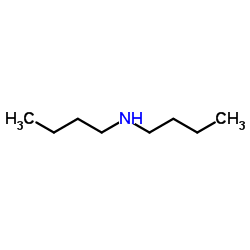 CAS#:111-92-2
CAS#:111-92-2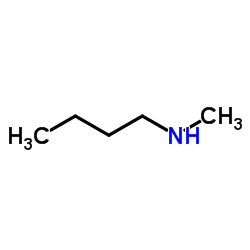 CAS#:110-68-9
CAS#:110-68-9 CAS#:927-62-8
CAS#:927-62-8 CAS#:67-56-1
CAS#:67-56-1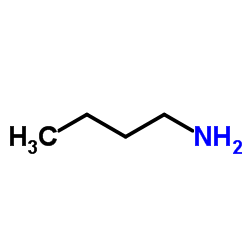 CAS#:109-73-9
CAS#:109-73-9 CAS#:74-88-4
CAS#:74-88-4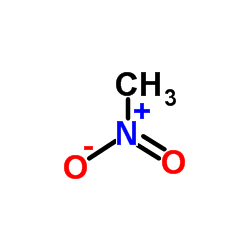 CAS#:75-52-5
CAS#:75-52-5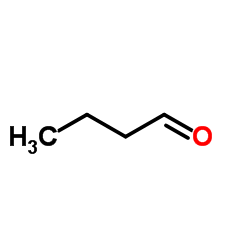 CAS#:123-72-8
CAS#:123-72-8 CAS#:108144-19-0
CAS#:108144-19-0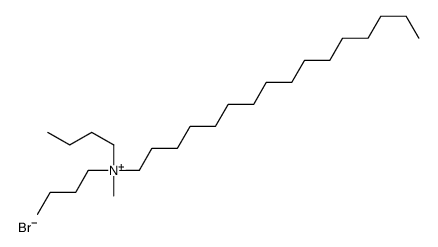 CAS#:141625-25-4
CAS#:141625-25-4 CAS#:75-73-0
CAS#:75-73-0 CAS#:76-19-7
CAS#:76-19-7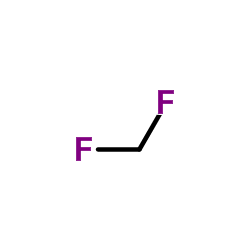 CAS#:75-10-5
CAS#:75-10-5 CAS#:76-16-4
CAS#:76-16-4 CAS#:75-46-7
CAS#:75-46-7 CAS#:355-25-9
CAS#:355-25-9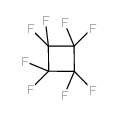 CAS#:115-25-3
CAS#:115-25-3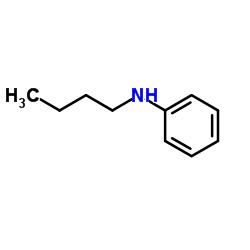 CAS#:1126-78-9
CAS#:1126-78-9 CAS#:100-61-8
CAS#:100-61-8